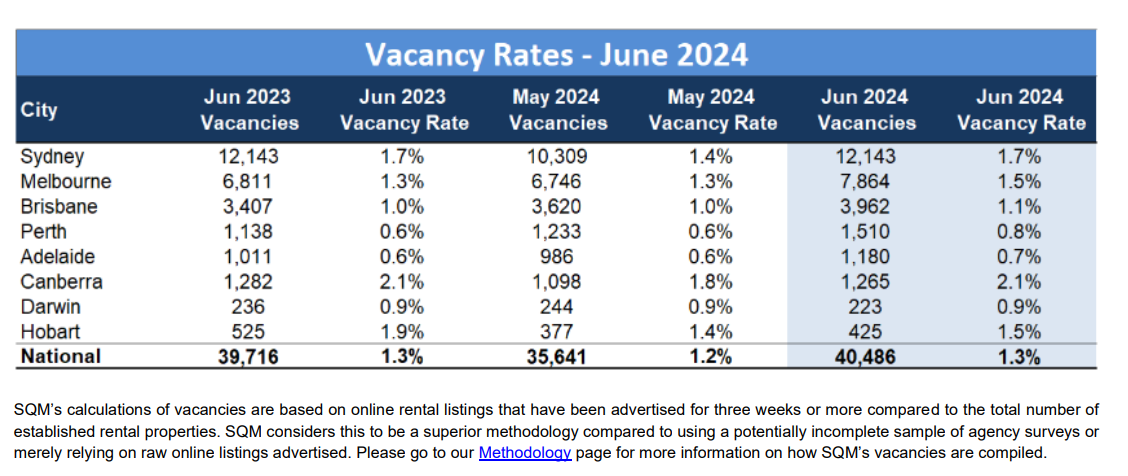

The Australian rental market for housing appears to have eased over June, with a rise in the number of vacant rental properties across the nation, SQM Research reported.
The number of rental vacancies rose by 4,845 dwellings, reaching a total of 40,486 vacant rental dwellings, representing a vacancy rate of 1.3%.
Sydney recorded a rental vacancy rate of 1.7% with 12,143 rental dwellings vacant, up from 1.4% in the previous month.
Melbourne also saw an increase in its vacancy rate to 1.5% from 1.3% in May 2024.
Over the past 12 months, Sydney’s vacancy rate remained at 1.7%, while Melbourne’s rate increased by 0.2% compared to June 2023.
“Based on history, we have now reached the peak in rental vacancy rates for winter,” said Louis Christopher (pictured above), managing director of SQM Research. “It is likely that, starting in July, vacancy rates will begin to tighten again and keep tightening until November.”
See LinkedIn post here.
Canberra recorded the highest rental vacancy rate among states and territories at 2.1%.
Perth and Adelaide recorded the lowest vacancy rates at 0.8% and 0.7%, respectively.
Vacancy rates in the Sydney CBD, Melbourne CBD, Canberra CBD, and Brisbane CBD all continued to increase over June, indicating that student demand for rental accommodation may have peaked for the winter months. In regional Australia, vacancy rates were mixed.
Sydney’s Blue Mountains saw a tightening in vacancies to 0.8%, while North Coast NSW saw a rise to 1.4%.
Queensland’s Gold Coast had the highest vacancy rate recorded since August 2020, rising to 1.7%.
Victoria’s Mornington Peninsula also rose to 1.7%. While Perth vacancy rates rose, most regional rates remained flat or fell for the month.
Overall, Western Australia has the tightest vacancy rates of any state or territory in Australia.
Over the past 30 days to July 12, capital city asking rents recorded a minor increase of 0.1%, with the overall national change rising by 0.3%.
Melbourne, Perth, Adelaide, Canberra, Darwin, and Hobart contributed to the increase in national and capital city asking rents.
Sydney recorded its second consecutive month of rental declines, dropping by 0.4% to $837 a week.
Brisbane saw a slight decrease of 0.1% to $658.85, after a rise in rents recorded in May.
Perth recorded the fastest rental growth for the past 30 days at +0.9%.
The national median weekly asking rent for a dwelling is now $721 per week.
Sydney continues to have the highest weekly rent for a house at $1,040 per week, while Hobart offers the most affordable unit rents among the capital cities at $468 per week.

“The magnitude of that tightening is what we will watch closely to see if there is anything more than seasonal variations occurring,” Christopher said.
“So far this year, it seems we have recorded very similar vacancy rates compared to the same period in 2023. However, there are some exceptions such as Melbourne, which is up slightly from 2023 levels, as well as some regional exceptions such as the Gold Coast, which is now recording the highest level of vacancies since 2020.
“Overall, the national rental market remains in severe shortage and, barring some exceptions, is not expected to materially soften out of the rental crisis for some years. However, much of the structural rental shortage has now been priced into the rental market and so I do believe the days of 10-20% plus annual rental increases have come to an end.”
Get the hottest and freshest mortgage news delivered right into your inbox. Subscribe now to our FREE daily newsletter.
